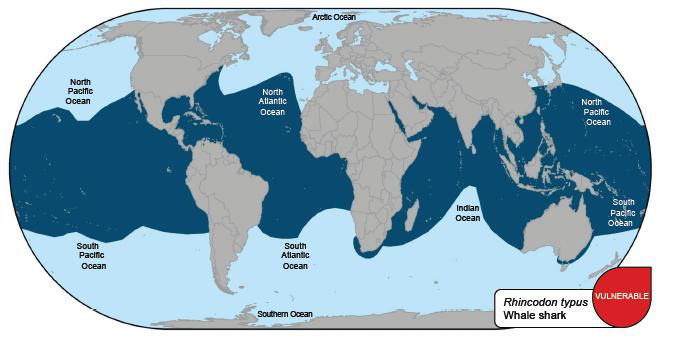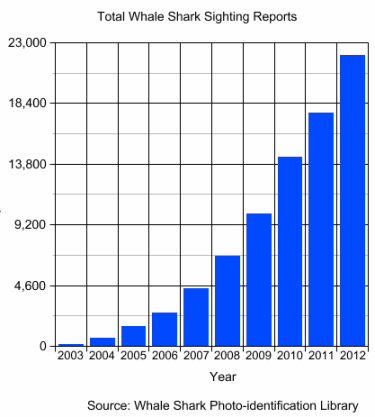In term three, Room 23 students from Forest Crescent Primary School decided to enter a state wide competition to name the first ever marine animal emblem which would become unique to Western Australia.
The class teachers discussed possibilities with the students and selected the Whale Shark to research and put forward for the emblem. Each child in the class worked on finding out about this majestic creature and presented their findings to the class. This happened over a period of approximately three weeks. Four students from the class were selected to speak in front of a panel of dignitaries in the boardroom of Parliament House. In total there were seven other finalists from state primary schools around Western Australia.
On Wednesday 25th of September 2013, Dora W, Zander S-R, Courtney F and Hannah E made a presentation to a panel that consisted of;
- Ms Sharyn O’Neill (Director General of West Australian Department of Education);
- Professor Lyn Beazley (Chief Scientist of Western Australia);
- Hon. Donna Evelyn Mary Faragher MLC (Parliamentary Secretary to the Premier; Minister for State Development; Science)
- Mr Michael Shultz (Channel Ten Weather Presenter)
The presentation looked at why the whale shark should be Western Australia’s marine emblem. Dora spoke about why the whale shark is important to WA; Hannah discussed what WA is doing to lead the world in whale shark conservation; Courtney explained why the whale shark should be our marine emblem; and Zander talked about our research on any Aboriginal significance of the whale shark to the Aboriginal cultures. These year four student representatives then asked the panel to accept the brochures that they had made to present their ideas. (Brochure-Click Here)
After this presentation the class waited anxiously for any results to be formally announced. They recall feeling extremely nervous but excited as today’s whole school community assembly revealed their success in this competition. Although other schools had chosen the Whale Shark, the Premier announced that our speakers won because of their obvious extensive knowledge about the creature and also other WA emblems.
The student’s now know that they will forever be part of WA history and have had a major say in WA’s identity. The school received a silver medallion and a certificate signed by the Premier, Mr Colin Barnett.
Interesting Facts about the Whale Shark (collated by Room 23 and presented to the panel)
The scientific name for a whale shark is Rhincodon typus. Whale sharks live in warm waters, except for the Mediterranean Sea. The first sighting of a whale shark was in 1828 at the Cape of Good Hope in South Africa by scientist Andrew Smith. Whale sharks are the largest shark and fish. Scientists estimate that these amazing creatures can weigh up to 54 000 kilograms.
The whale shark’s mouth is wide and large. Unlike most sharks whose mouth is located underneath their snouts, the whale shark’s mouth is nearly at the tip of its nose. The whale shark can open their mouths up to 1m and filter over 1500 gallons of water every hour. The whale shark has a distinctive pattern of cream coloured spots and stripes on its back. Its back is blueish grey to brown with thousands of the spots scattered in a unique pattern. These slow moving gentle giants eat crustaceans, algae, plankton, fish eggs, small fish, crab and more by scooping them into their colossal filter feeding mouths. They use their sense of smell to locate protein-rich waters.
Female whale sharks have hundreds of thousands of eggs inside them. Since whale sharks probably can’t reproduce until they are in their late 20’s or 30’s, the whale sharks stand a good chance of being harpooned before it can give birth, leading to reduced numbers. Young sharks are called pups and grow inside their mothers. In 1995, scientists captured a pregnant whale shark with 300 shark pups in size from 42 to 63 centimetres. They have 3000 tiny teeth which are hardly used. Whale sharks expel excess water through its gills, while keeping in small solid organisms.
International Interest in Whale Sharks
The Philippines, Belize and Baja peninsular of Mexico are involved in whale shark conservation because they have benefited from eco tourism relating to whale sharks. Ningaloo Reef in WA and Donsol in the Philippines are two of the best spots for swimming with whale sharks.
The map below shows the distribution of whale sharks around the globe.(source: www.pewenvironment.org)
Why is the Whale Shark Important to WA?
The corals bordering areas of Ningaloo Reef provides the whale shark with an abundant supply of plankton. In recent years there has been a great increase in the number of whale shark sightings in the Ningaloo Reef of WA. Whale sharks are a major attraction for eco tourists. Eco tourists have the opportunity to swim with the whale sharks and see these amazing creatures closely. Each year 20 000 people swim at Ningaloo with the whale sharks.
Due to its large size, the whale shark can be spotted in the ocean from land and boats. This makes it a marine animal that all people can enjoy seeing fairly easily. At Ningaloo on the Coral Coast, you can just step off the beach or take a cruise to see these remarkable animals. So promoting sustainable eco tourism will help increase awareness about the need to conserve whale sharks.
What is WA doing to Lead the World in Whale Shark Conservation?
A number of WA universities, scientists and researchers are involved in conducting studies about the behaviour of whale sharks and about developing sustainable eco tourism and conservation in WA. Whale sharks arrive off Ningaloo Reef between March and July each year due to the coral and plankton bloom and at Christmas Island between December and January due to mass spawning of the land red crabs.
Speaking about the whale shark’s migration patterns, WA based marine scientist Brad Norman mentioned that they have found that the same sharks are coming back to WA each year. Mr. Norman who works at the WA based research institute ECOCEAN, began photographing and videoing the patterns on the backs of whale sharks in Australia. He and others are using these photos to identify individual whale sharks by the shark’s spot patterns. The library is maintained and used by marine biologists to collect and analyse whale shark encounter data to learn more about these amazing creatures.
ECOCEAN has also started the ‘Adopt a Shark’ program which contributes towards raising money for maintaining the photo library and other research projects.
People who swim with the whale sharks are also given the opportunity of being a scientist for a day by adding their own photos to the whale shark photo identification library. This has resulted in the positive graph shown below.
The work in Ningaloo has led to the realisation that whale sharks are no longer needed to be hunted and that they can be managed by all countries to create eco tourism which is a bigger business and bring more money into the economy. Ningaloo is positively managed and the work of people like Tim Winton stopping major development has allowed this beautiful part of Western Australia to continue to be kept for all people to enjoy. Brad Norman pointed out that in 1999 a whale shark was tagged with a satellite tag at Ningaloo Marine Park in WA and tracked for 420km away from the Australian shores towards Indonesia before the signal was lost.
In Conclusion-Why Should the Whale Shark be the Marine Emblem for WA?
Whale sharks are endangered species and having them as the marine emblem would help raise awareness about conserving these rare and vulnerable species. The whale shark is listed as vulnerable and migratory under the Environment Protection and Biodiversity Conservation Act 1999. In WA, the whale shark is listed as a ‘totally protected fish’ under the Conservation and Land Management Act 1984 and the Fish Resources Management Act 1994.
The WA Department of Conservation and Land Management (WA CALM) is responsible for the day-to-day management of whale sharks within Commonwealth waters under a memorandum of understanding between WA CALM and the Commonwealth Department of the Environment. So having the whale shark as our marine emblem would promote the fantastic work WA is doing in leading the world in whale shark conservation.
Having the whale shark as our marine emblem would also contribute towards both state and federal governments to realize the importance of funding whale shark conservation programs. Another benefit of having the whale shark as our marine emblem is that it would encourage more scientists and researchers to be involved in conducting studies about these animals.
Photo Gallery
(Click on image to enlarge)














